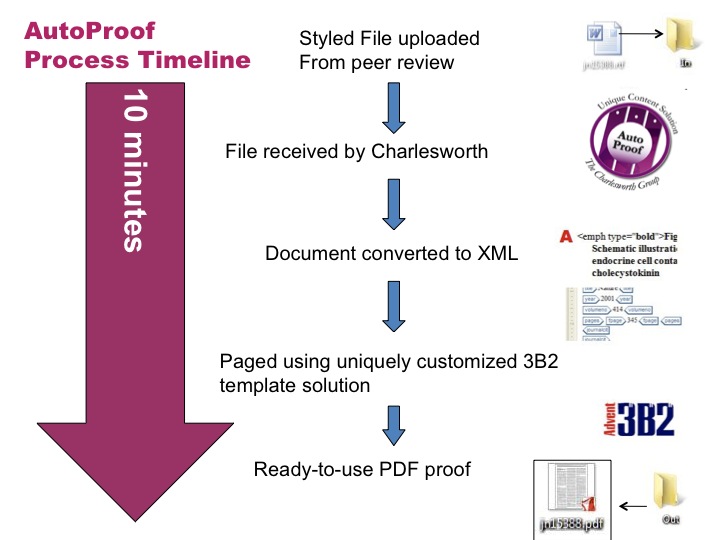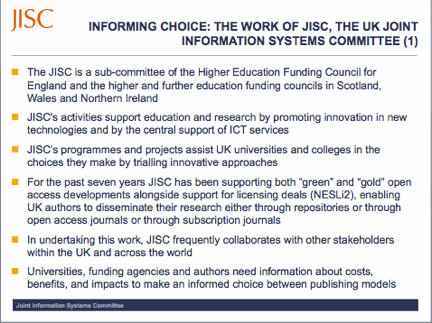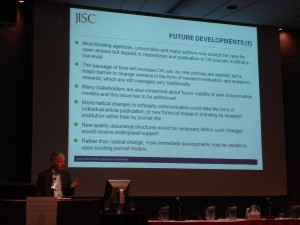Moving from Paper Production to Online Open Access with Open Journal Systems: The Session Blog
Presenter: Laura C. Botsford, Assistant to the Editor, Canadian Journal of Sociology, University of Alberta
Time: 4-5 pm, July 9th, 2009
Place: SFU Harbour Centre, Sauder Industries Room 2270
———————————————————————————————
Session Overview
Background
In the early days of the Canadian Journal of Sociology, a great deal of manual work was required to print the journal, from getting galleys to making notes in the margins, to cutting to appropriate size and pasting onto paper sheets, etc. The editors of the journal soon realized that they were susceptible to too many external factors and decided to move to typesetting and a mainframe computer. While this newer technology had its advantages, there were many codes to learn and all that could be seen was the markup language; not the end result. The lack of a preview often created surprises for the editors when the pages were printed. Eventually technology progressed and the journal got some computers with What You See Is What You Get (WYSIWYG) capabilities– but they still had to go through the whole printing process. Dr. Kevin D. Haggerty took over as editor in 2007 and within a few months, decided to go electronic and open access with the journal. While everyone involved had many questions and qualms, they ultimately ‘took the plunge.’
Related Information Re: Printing Processes
Click here for a printing press demonstration on Youtube
A more recent version of the printing press:
(source)
Using the Open Journal System (OJS)
Moving to electronic publishing has reduced many of the traditional problems involved with the printing process and OJS has features that are very helpful, such as its functionality for the second review– the system automatically generates a list of reviewers and filters out those who have already declined in the first review.
However, OJS still poses many problems for users, so patience and technical support is absolutely critical.
Session Questions
Comment: There are currently seventeen journals running on the University of Alberta website, but the Canadian Journal of Sociology has been the most conversive, and questions have really pushed the development of OJS forward.
Question: What was the driving force to move to online and open access? We were becoming aware of the new generation of scholars coming up, and they are expecting to see their info on the internet. Also, printing and mailing is becoming increasingly expensive.
Question: How many copies were being printed prior to moving to electronic form? Answer: 1000
Question: How has converting from print to open access impacted the finances of the journal? Answer: It was a subscription journal, but the journal has been anomalous. We had some money in the bank, and received money from aggregators who have continued to contribute. One of the reasons for moving to open access was that subscriptions were dwindling– libraries were declining because they were lacking space and funding.
Question: Any plans to digitize back files? Answer: Yes. We haven’t tried it yet, but are definitely planning to.
Question: What is your business model? How much does it really cost to run the journal? Revenue stream? etc. Answer: Revenue stream usually from the Social Sciences and Humanities Research Council of Canada (SSHRC) and aggregators, but we also had money in bank that was invested. We also benefit from non-monetary things that the university provides, such as office space, release time from teaching for Dr. Haggerty, etc.
References
Taking the plunge Haggerty, K.D. (2008). “Taking the plunge: open access at the Canadian Journal of Sociology” Information Research, 13(1) paper 338. [Available at http://InformationR.net/ir/13-1/paper338.html]
Related Links
July 13, 2009 Comments Off on Moving from Paper Production to Online Open Access with Open Journal Systems: The Session Blog
The Latest Developments in XML Content Workflows: The Session Blog
Presenter: Adrian Stanley, Session Abstract
July 10, 2009 at 11:00 a.m.
Background
Adrian Stanley is the Chief Executive Officer for The Charlesworth Group (USA). Prior to this Adrian worked for 4 year as Production Director for Charlesworth China setting up their Beijing office. The Charlesworth Group offers cutting edge automated typesetting services, as well as Rights and Licensing opportunities for publishers in the China market. Adrian is an active committee member for the SSP (Society for Scholarly Publishers), The Association of Learned and Professional Society Publishers (ALPSP North American Chapter), the Council of Science Editors (CSE), as well as working on a key project with the Canadian Association of Learned Journals; he has 20 years experience working in the publishing/printing sector.
Session Overview
This session was a technical session, yet one which tried to keep the technology basic and focused more on the benefits of the technology for the publishing process, particularly the benefits of XML. Charlesworth works with XML and XML workflows. Their aim is to support publishers. This session showcased their tools.
The benefits of using XML are the automation and time saving in the publisher’s workflows. But more fundamentally XML adds energy to data. The presenter took a short poem and showed it as text, then HTML then XML. The change in the poem was less how it looked than what it now was. In XML, it now had substantial additional information encoded with the poem.
Benefits of XML are numerous, adding more information and data about an article, data that is both machine and human readable. The presenter referred to the excellent pre-conference workshop in the PKP 2009 conference by Juan Pablo Alperin for further information on XML.

Image taken from presenter's presentation at PKP 2009, with permission
AutoProof Process Timeline diagram highlights the 10 minute process that Charlesworth’s AutoProof performs. It takes a styled file, converts it to XML and then outputs it in production ready PDF format. Charlesworth provides some Microsoft Word macros that help apply tagging and styling, to prepare documents in Microsoft Word for import to this process and ultimately XML. The presenter took us through this process showing each stage.
The presenter then showed the Online Tracking System that allows a view into each stage in the AutoProof process. From one screen, the publisher and editor can run the entire publishing process.
Next some examples of the many other types of AutoProof publications that are possible were shown. It’s not just journals e.g. program and abstract meetings, ebooks, dictionaries, etc can be handled. As long as files coming to AutoProof are structured, many types of documents can be used and created. So what AutoProof is doing is simplification and reduction of time in the workflow process, using XML at its core.
In addition AutoProof supports incorporating XML into the PDF, to make PDFs more readable and searchable. Storing the metadata in the PDF file (using XMP) could make it much easier to import a large collection of PDF files into a reference manager. XMP combines XML metadata within the PDF file. The presenter showed a sample XML Packet (XMP) page.
Other applications and developments with XML are also possible including auto generation of table of contents and Index, author proofing of link to PDF form XML, creating XML in multiple DTDs (document type definition), etc.
So in summary the goals of AutoProof are to enhance publications, customize how much or how little the publisher wants to do with XML, provide integrations with other systems and provide the basis for further developments e.g. authoring templates. Lastly, the presenter showed an example of OJS journal using AutoProof. Every reference automatically picked up the DOI (Digital Object Identifier) and automatically creates web links to the references.
Session Questions
Q: How much of publishing workflow did the James Journal use?
A: The James Journal allowed forward and backward linking, see the references in this James Journal article. They used most of our services; most fundamentally we created the XML. Because they used a lot of our services they were able to publish this magazine with a part-time editor.
Q: What about integration with OJS?
A: So we are working on creating integration with OJS
Q: What are the costs?
A: Broad range, depending on services that you need. The important point however, is to start to work out how much the alternatives of using your staff time is in fact really costing you. That is where we can help you make savings by significantly reducing the amount of staff time you need to dedicate to the publication process.
References and Related Links
Charlesworth Group launches new open access OJS journal
DTDs (document type definition)
DOI (Digital Object Identifier)
July 10, 2009 Comments Off on The Latest Developments in XML Content Workflows: The Session Blog
Towards A New Future for Journal-Article Publishing: The Session Blog
When: Friday, July 10, 2009
Room: Main Concourse – Fletcher Challenge Room 1900
Time: 9:30 am – 10:30 am
Presenter: Frederick “Fred” Friend
Fred Friend studied history in Kings College, London. Next, he obtained a post graduate library qualification at the University College in London. Fred’s library career has spanned from Manchester University, to the University of Leeds, to the University of Nottingham and finally at University College in London. He currently holds the title of Honorary Director of Scholarly Communication at the University College in London. He is an OSI Open Access Advocate and a JISC Consultant.

Fred Friend (source: Photo taken by Helen Szeto)
Session Overview:
Friend is here today to discuss the future of scholarly journal publishing with the movement towards the Open Access model. He begins the session by letting the audience know that the publishers in the UK are saying Open Access will destroy scholarly publishing. He continues by listing the assumptions that the publishers have. Some publishers see Open Access as a threat, while others see opportunities in the new model. Many publishers want the change in model to support rather than weaken journal publication. Publishers put the emphasis on the quality of the journal, while researchers put the emphasis on the article. They want to see public money to help increase publication. Friend asks the questions, “What kind of business models can be made viable in the future? Which models will enable high and effective use of published research?” There are large areas of agree and disagreement.

(Source: slide courtesy of Fred Friend)
This is where the Joint Information Systems Committee (JISC) comes into the conversation. It is a national committee in the UK that provides universities and researchers with information that they need in order to make the right choice. JISC is a strong supporter of open access and want to help maintain the existing model. They want to help promote innovation especially in helping universities decide which are the best innovative approaches. JISC supports both “green” and “gold” open access development alongside support for licensing deals. They want to collaborate with other stakeholders of scholarly journal publishing within the UK and world. Friend is here today to see JISC have more collaboration with the Public Knowledge Project.
The one key factor about providing information is the choice about cost and impact factor. JISC commissioned a report on the economic implications of alternative scholarly models. It also looked at how it would help the UK economy. Findings from the report showed that the UK benefited from moving towards either a self-archiving model or the gold Open Access model. It can get very fast returns by moving top open access (either green or gold). The Netherlands and Denmark have made similar reports. JISC also examines how much it will cost for institutions to switch models. They are trying to work with publishers on offering authors a choice between copyright and licensing.
Many policy statements in Europe have supported Open Access. Collectively, the European Union committed to an Open Access policy research funded through FP7. Local European institutions are considering how to manage these Open Access changes. There is stronger interest in gold Open Access in Europe than in the United States. Globally, countries with newer growth economies and less established publishers do not appear to be more advanced in Open Access developments than ones with established economies.

Fred Friend Presentation (Source: Photo taken by Helen Szeto)

(Source: slide courtesy of Fred Friend)
In future developments, Friend believes that there has to be a lot more in advocacy. Many researchers are concerned that their favourite journals will disappear. Fred says that academic journals will not collapse because of their importance to the research community. He believes their survival will come through changes in the repository. The academic community will take more control over the research dissemination process while publishers will act as service providers. Changes will happen, there will be variations and hybrids of new and old models. There will not be one model that will be able to dominate such as the subscription model has.
Analysis:
Friend recognizes that changes will need to be made to the subscription model in order for scholarly publishing to remain. His presentation provides a positive outlook for publishers in a world with Open Access. Both models can survive together, but changes will need to be made by both. The key word in the presentation is “change.” Things cannot stay the same; changes will have to be made to the traditional scholarly publishing model. Friend encourages everyone to go out and advocate for these changes. He believes that is the way to change the traditional model.
Session Questions and Answers:
1) One audience member said, “There are some green Open Access advocates who are very vocal about researchers …giving money to publishers when they can do it for less themselves. What is the cost of building institution repositories?
Reply: “Green Open Access is the best value for money of the 3 models, which is evident at the national level in the UK, Netherlands, and Denmark.” Friend doesn’t believe it will be the sole model used.
2) How do you get over the problem of having researchers demand certain journals?
Reply: Friend’s suggestion is to cancel subscription and buy gold Open Access journals.
3) Addressing the awareness of difference economies.
Reply: Friend says that charges to each model are based on their cost in the current system. He thinks that the costs will settle down over time. There will still be variations in models because there are different costs involved.
4) Friend comments on the voluntary labour in the publishing models. Voluntary labour is not free because mostly the institutions subsidize it. Problems occur with certain inefficiencies such as people not skilled in what they are doing. People are spending time doing something that someone else can be doing better.
5) What makes you think that the cost will be better controlled in the new models?
Reply: Friend believes that the academic community will control costs.
Related Links:
- Berlin 6 Open Access Conference: Frederick Friend
- Description of JISC’s scholarly communications work
- EFFECTIVE SCHOLARLY COMMUNICATION: JISC working for UK teaching and research presentation
- The European Commission’s open access policy
- Funding Policies and Research Access Round Table
- Google Scholar: Potentially Good for Users of Academic Information (2006)
- Open access advantages, opportunities, support: JISC and the UK parliamentary enquiry into scientific publications by F. Friend
- Negotiating Prices and Licenses for Networked Electronic Information by F. Friend
- Recommendations on paying gold OA publication charges in the UK are included in a working party report
July 10, 2009 Comments Off on Towards A New Future for Journal-Article Publishing: The Session Blog
Customizing OJS for Magazine Publishers: The Session Blog
Presenter: John Maxwell
July 9, 2009 at12:00 noon

John Maxwell
Background
John Maxwell is currently with the Canadian Center for Studies in Publishing at Simon Fraser Universtiy in Vancouver, British Columbia. John’s work specifically focuses on the advantages of open journal system (OJS) software models to be used as a framework for the Online Magazine Management Models (OMMM) project that applies to use in the area of publishing small cultural magazines (Maxwell, 2008).
Session Overview
John Maxwell reported on the very recent initiatives of a new model for small magazine editorial publishing. The OMMM) project based its creation on the Open Journal Systems (OJS) with what Maxwell describes as a process with a more collaborative approach but at the same time keeps within the intent of the OJS overall concepts.
Small cultural magazines do not have the exact purpose of journal publishing but there are similarities to moving from text based publishing systems into online management systems. The OMMM project is not at a stage of online publishing but is using the OJS concepts and applying that process to the electronic management of submissions as a starting point.
With the specifics of the OJS, Maxwell’s work centers around taking some of the same ideas of OJS and applying those systems to fit into a version that would be streamlined for magazine publishing.
What the OMMM project essentially produced was a translation of user interface from OJS into a more user friendly language for magazine publishing. As the project evolved two models of editorial governance were designed:
- Discrete delegation of responsibilities
- Collaborative, task-based, process management
One of the key concerns while working on the OMMM project was to capture a workflow model that would capture the essence of a wide variety of small cultural magazines. Currently the project is using PLONE as the Web platform – designed as a “miniature OJS.” PLONE houses the Editorial Submission Management (EMS) that includes the following aspects:
- System of buckets for organizing content
- 3 stage workflow (red, yellow, green)
- Basic notification
- Word.doc – Web based content
- Relies on collaboration and trust among the editorial group
Although this new concept is in its infancy the concept of using OJS framework has moved the publishing of small scale magazines into the cyber world and has started a ground level development in the first steps toward newer developments of online publishing for the future.
Audience Input
The overall sense from those audience members who spoke – were complimentary to the project or any project that uses online open access; however, access to the technology remained the major issue for users of any place across the world….not just remote areas. There still remains key issues around access to the technology and infrastructure in order to access these online programs for the publishing and reading of open source knowledge.
References
Maxwell, J.W. (2008). OMMM Project: Toward a collaborative editorial workflow. Blog. Retrieved July 7, 2009, from http://thinkubator.ccsp.sfu.ca/wikis/ommm/OMMMProjectTowardACollaborativeEditorialWorkflow
Related Links
BC Association of Magazine Publishers
Workshop: Web Content Management for Publishers – August 4,5 and 6
July 9, 2009 2 Comments